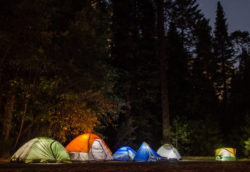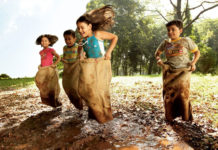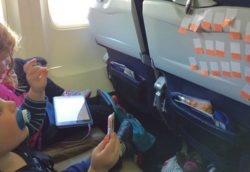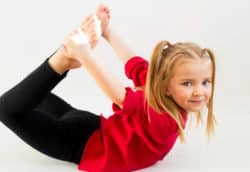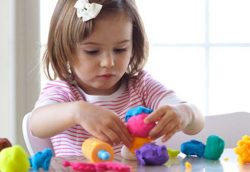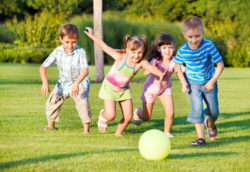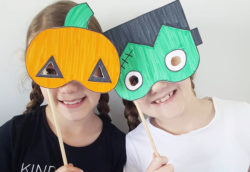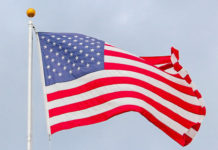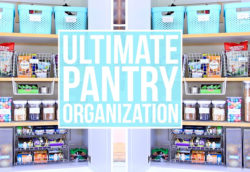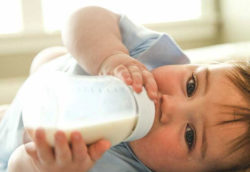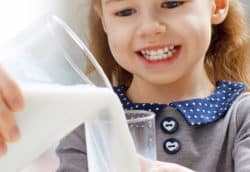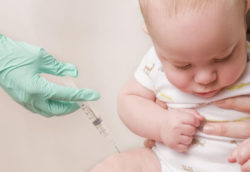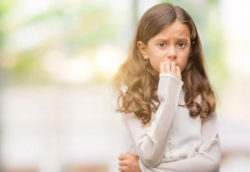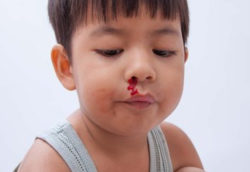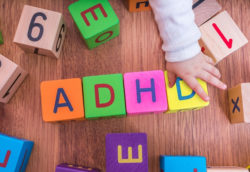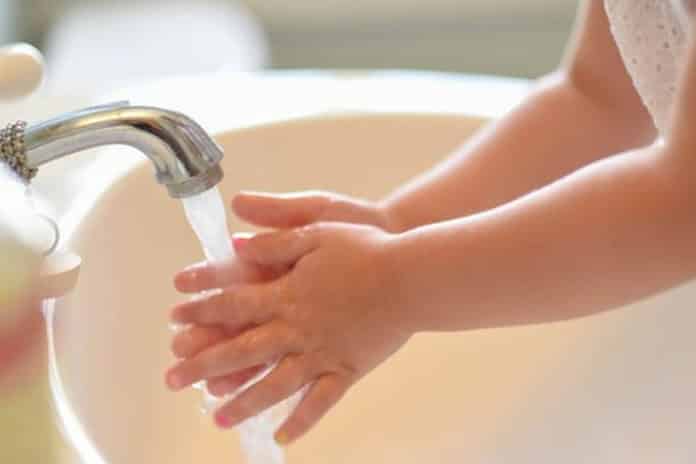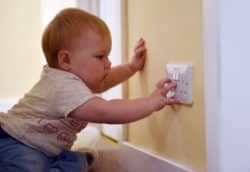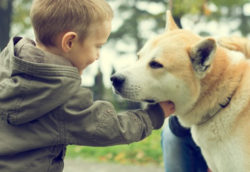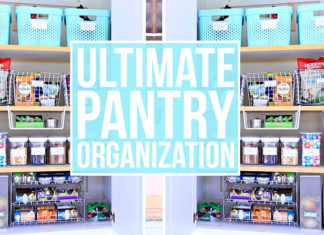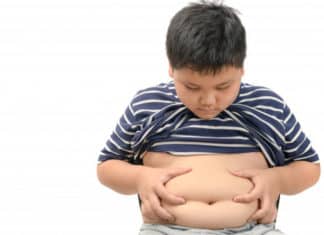The coronavirus is spreading rapidly all over the world and the weapons that we have to break the chain is hand washing and social distancing. Not only in this specific situation handwashing is important for your child to combat many infections, diseases and adopt healthy eating.
Studies suggest that on an average you come in contact with about 300 surfaces for every 30 minutes exposing you to 8,40, 000 germs. Hands are the excellent tools that the kids use to explore the things. Hands can help the kids to create many wonders and make them more vulnerable to many infections.
Centers for disease control and prevention (CDC), states that handwashing can prevent 1 in 3 diarrhea related sickness and 1 out of respiratory infections like cold or flu. This article discusses some funny ways to teach kids wash their hands.
Importance of Hand Washing for Kids:
Hand washing is simple, inexpensive, and easy and protects your kids from the sick days and frequent visits to the doctor. From respiratory infections to many food-borne illness, many sick conditions can be minimized if everyone practice washing their hands.
How Do Germs Spread?
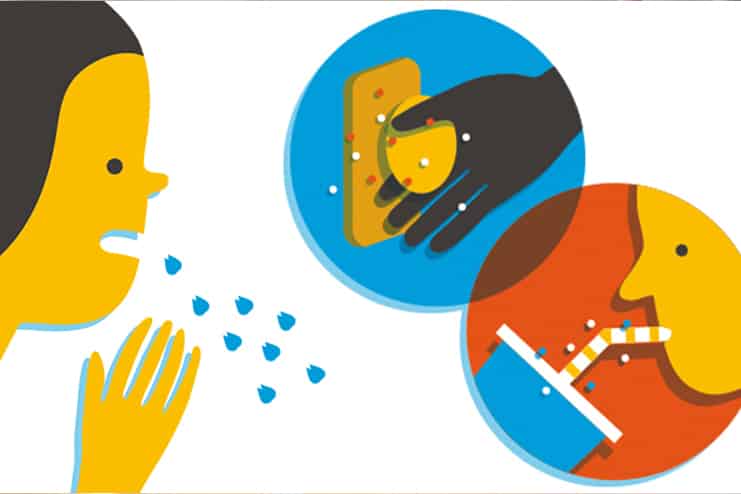
Germ is a tiny microorganism that leads to many diseases in plants, animals, and humans. The four types of germs are bacteria, virus, fungi, and protozoa. They enter into the bodies of living organisms and make them sick.
A study suggests that the exposure of the kids to the common germs may strengthen the immunity system during the childhood. Exposure of the kids to the nasty germs may make them to tie up with many diseases.
Here are a few ways that germs spread:
● Touching the dirty hands
● Changing the dirty diapers
● Spreads through the contaminated water and food.
● Through the droplets released during coughing and sneezing
● Touching the contaminated surfaces
● On contact with the body fluids released by sick person.
When the kids come in contact with the germs, they become sick just by touching their nose, eyes, and mouth. Once any of the family members are infected, it can be transmitted to the rest very quickly. So, handwashing should not be underestimated. A few seconds of handwashing can save you from many infections.
When should we wash our hands?
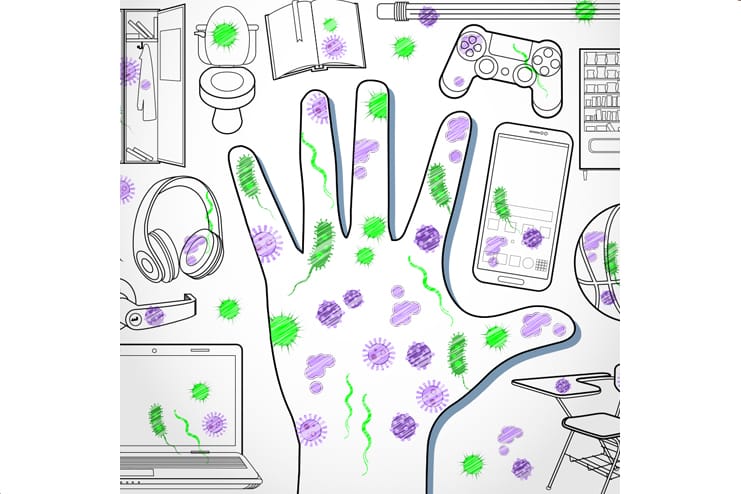
Handwashing rule is very important in the family to stop the spreading of many infections. It is especially important in the following cases:
● Before eating and cooking the food
● After the trip to washroom
● After cleaning around the house
● After touching the pets
● After touching the cut or open sores
● Before and after visiting the sick person
● After blowing the nose, coughing, or sneezing
● After playing outdoor games
● After the daily chores like gardening,
● After using a tissue or hand kerchief.
● After touching the garbage
Follow the right steps to wash your hands in the proper way:
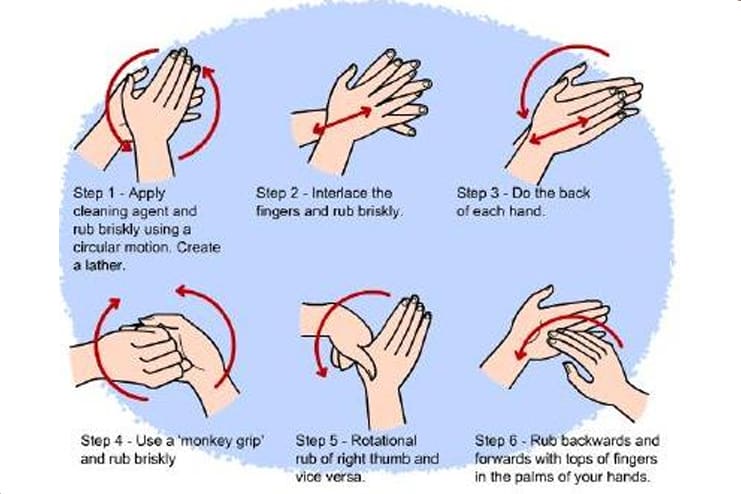
Hand washing is one of the effective ways to stop spreading of germs. Clean hands can stop spreading the disease from one person to another or through the communities.
Here are the few steps that you should follow every time while washing hands:
1. Wet your hands properly with the clean and running water.
2. Lather your hands by rubbing them against each other with the soap. Lather the back of your hands, in between your fingers, and under your nails.
3. Scrub your hands properly for at least 20 seconds.
4. Rinse your hands under the running water.
5. Dry your hands using a clean towel or dry them in air.
Which infections can be prevented by hand washing?
Unattended germs on the hands of your kids may lead to many dangerous situations. Many infections can be prevented by the use of simple handwashing. Some of these conditions include:
● Common cold
● Influenza
● Hepatitis A
● Meningitis
● bronchiolitis
How to teach kid to wash their hands?
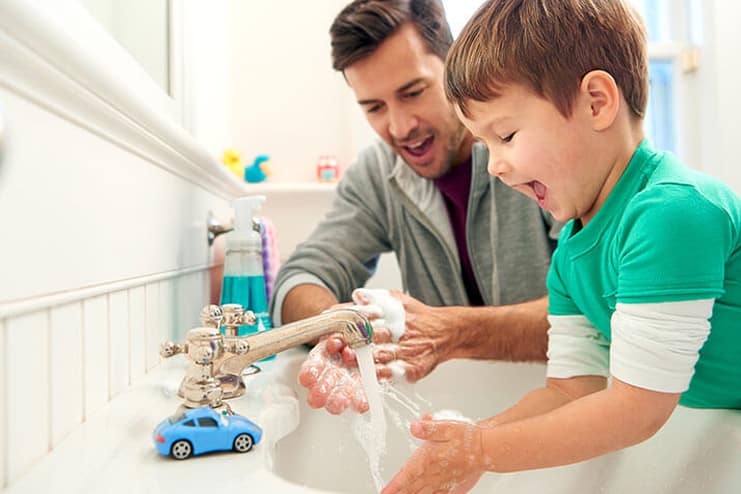
Parents and caregivers play a prominent role in teaching some healthy habits for children. This activity can become life-long healthy habit, if you start teaching them from the early age. Getting the kids into the task of handwashing is the critical task for many parents. You can make this typical step a habit by making the handwashing a routine. Make your kids to know the wonders that handwashing can create.
Let your child understand that handwashing can break the chain of many infections. Here are a few steps to introduce handwashing to the children:
1. Buy funny and foam making soap:
Buy the soaps in different shapes and colors that your kids love to use them. Regular soaps may make your kids feel bored. You can also mold the regular soaps into many desired shapes.
You can use the handwash that is specially designed for the kids with the smooth fragrance.
2. Give frequent remainders:
Handwashing is the foreign thing from many children so including this skill may take some time. Give your child regular remainders to wash their hands initially. It is especially important to remind your kids washing the hands especially after the visit to bathroom, coughing, sneezing, or blowing their nose. If you are successful in making the handwashing an interesting activity, you need not to push your child to wash their hands.
3. Help your child to reach the sink:
If your child is small hold them or help them to reach the stool by making them to stand on a stool. Kids want everything to be so colorful, creative, and interesting. Keep for them a step stool of their favorite color.
4. Talk to your kids about the germs:
This is one of the techniques of teaching a child to wash their hands. Children cannot fully understand the importance of hand washing. Talk to your child about germs practically. Let your child understand that germs can hurt and make us sick and how handwashing can help to get rid of germs.
5. Use videos:
Use some songs related to handwashing and animated videos to illustrate the importance of handwashing. This way can help the child to treat handwashing more interesting and funny activity.
6. Demonstrate how to press soap pump:
Most of the kids are not comfortable using the handwash as they find difficulty in pressing the pumps. Help your child to press it down for few times before using. If your child is very small then you can dispense the soap for them.
7. Give your child choice to choose their own soap dispenser:
This way works to make the handwashing more interesting. Help your child to choose the hand dispenser of their choice either from the online store or physical store. Children can get to use the things that they like more.
You can also order some personalized soap dispensers for your child. This technique helps to make the hand washing a habit and part of your kid’s life unknowingly.
8. Lead example by washing your hands:
Young children are likely to imitate many things from their parents. Wash your hands more frequently before cooking or after touching any other possible contaminated things in front of your children. When you make the handwashing a part of routine, then you are successful in making your kids to follow the same.
9. Teach kids to wash their hands for 20-30 seconds:
Studies show that 20-30 minutes of handwashing is required to completely eradicate the germs from the hands. Help your child to hum the happy birthday song at the slow pace or alphabet song throughout the process of handwashing.
You can set a small timer side by the sink to help your child on how long to wash their hands.
10. Rinse your hands together:
Show your kids to how to remove the bubbles from their hands completely. Ask your child to check for any left bubbles and the lather in between the fingers, under the nails. Though it is not dangerous to leave the soap bubbles, children often put their hands in their mouth.
You can make this activity as the game and ask your kids to see who can get rid of the germs faster.
11. Buy some interesting hand towel for your child:
Show your child how to dry their hands by grabbing the towel from the hook. You can make this more attractive by making the hook and hand towel more interesting. Ensue to place the hand towel in the reach of your kids.
12. Incorporate handwashing into your daily routine:
You have to make the handwashing a family routine. Before you all move to the dining table make your family members to gather to wash their hands and follow the same after the mealtime.
13. Wash your hands to signal the end of activities:
Make the handwashing as a signal that you have done with the specific activity and let your child to understand this. Wash your hands after gardening where you need to handle with the dirt and the mud encourage your child to help you while gardening. Highlight the handwashing after the gardening.
Encourage your child to wash their hands after every playtime starting with craft making, coloring to the outdoor games. Though coloring is not actually the place for the germs, it is more important to make them wash their hands.
14. Praise your child:
Any good behavior can be reinforced by praising. When your child washes their hands praise them this encourages them to do the same activity again. You can successfully include the habit of handwashing by praising your child more often.
Here are a few things to be aware of while praising your child:
● Avoid bribing your child as you can not always offer a treat every time, they wash their hands.
● Be sincere while praising. If your child runs to you waving their wash hands give them a hug and gentle praise.
15. Switch to hand sanitizer:
Your kids love to see the hand sanitizer disappearing on their hands. Ask you kids once or twice in a day to sanitize their hands. Switch to sanitizers for few times a day. Help your child to sanitize their toys.
Teach your child how to use the hand sanitizer. Ask them to put a quarter sized blob into their palm and ask them to rub well all over the palm including the gaps between the fingers and back of palms till it gets dry. Do not use the hand sanitizer if your kid’s hands are visibly dirty or greasy. After the activities like gardening, playing outdoors, fishing, or camping hand sanitizer may not work effectively.
Note: over the past five years, the U.S poison control centers have received calls of around 85,000 about the children drinking sanitizers. Teach your child the adverse effects of consuming the sanitizer. Even a two to three squirts of sanitizer consumption may lead to confusion, vomiting, slow breathing, low body temperature, or bluish or pale skin.
Hand Washing activities for kids:
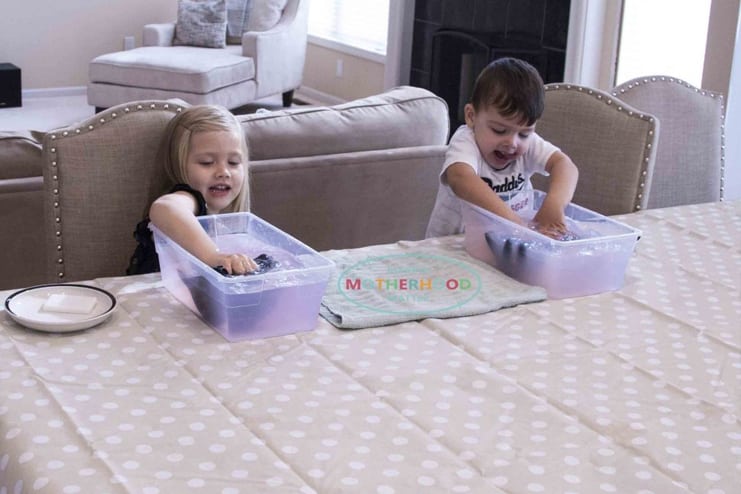
Here are a few handwashing activities for the kids that make handwashing funny and interesting activity:
1. Use baby powder to demonstrate germ transmission:
Teach your children how the germs spread in air. Take a small amount of baby powder and pretend sneezing it by blowing on it. Students can see baby powder spreading and understand the importance of covering their mouth and nose while sneezing. This helps child to understand the importance of washing their hands after sneezing, coughing.
2. Spread glitter:
Put some kid’s friendly glitters on the hands of your kid and ask them to give you shake hand and ask them to observe the transmission of glitters. Teach them germs also spread the same way. Let your child to understand the importance of hand washing after giving hand shake.
3. Hand Lens:
Have your child to look at their hands using the magnifying lens. Ak your child to observe corners and crannies where germs can hide and draw the map of their hand. You can extend this activity by having your child’s handprint on the paper. The ink will show your kids the spots they should reach every time they wash their hands.
4. Hand Washing Chart:
Design a chart for your child and leaves spaces for each day where the child can note down when they have washed their hands. Let them recognize whether they are washing their hands properly or not.
5. Ask them to wash a toy:
Give your child a toy and make them to wash their toy too every time they wash their hands. Offer your child some hard toys that can be washed and dried easily like plastic blocks. Don’t offer them puffy toys.
6. Demonstrate the transmission of germs through pompoms:
take a cup full of pom poms and spread them all over the flat surface assuming them as the germs and ask your child to observe the rapid transmission of germs when you cough or sneeze. Ask your child to cover mouth and nose while coughing and sneezing and wash hands properly.
7. Demonstrate the power of soap:
Take a bowl full of water and sprinkle pepper powder over the surface of water to represent the germs. Place few drops of soap at the center of the pepper layer you can observe pepper scattering to the edges of the bowl. This is a great experiment to demonstrate the value of hand washing.
When to reach for the alternatives?
The alternatives to soap are hand sanitizers and wipes. Here are a few cases when you can reach out for them.
● While travelling where you don’t have access to water and soap.
● You can make your child to carry the hand sanitizer with them while going to school or playground.
Hand sanitizer does not work when the hands are visibly greasy or dirty. Soap and water are best to remove hard stains from the hands. But hand sanitizer is a good backup when you cannot find soap and water. Use alcohol-based hand sanitizer with at least 60% of alcohol in it.
Baby wipes may make your hands look clean but they are not designed to eliminate dirt and germs from your hands.
Tips to make your kid’s hand washing a pleasant experience:
Here are a few tips for the successful handwashing in your child:
● Spills and messes are the common part of your kid’s handwashing activity. Prepare yourself to deal with it and make the cleaning a common part of your daily routine.
● Do not teach your children how to operate the hot water faucet as they can easily burn their hands.
● Each time you go to a new place, help your child to wash their hands.
● Use warm water instead of hot water to protect your kid’s sensitive skin from drying.
● Hand sanitizer can be used when hands are extremely chapped.
● If your child suffers from the skin conditions such as eczema or psoriasis and their skin is getting drier when washed you can use skin balm like Vaseline to apply it directly over the sores or dry areas.
In conclusion, washing the hands can keep you and your family safe from the floating viruses around you. If you make it a fun task for your child, then you won’t have to chase your child to wash their hands.

